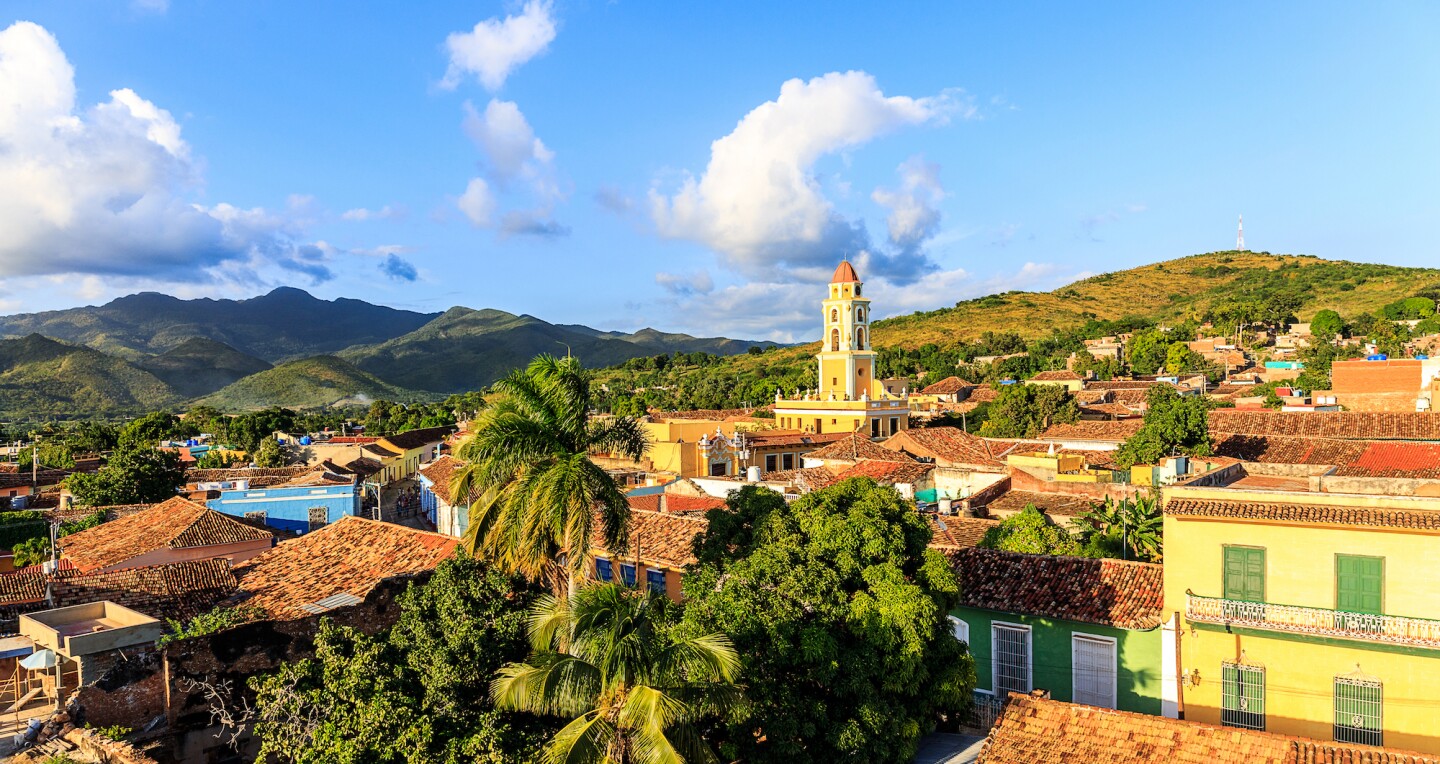Overview
When’s the best time to go to Cuba?
As with other Caribbean destinations, Cuba is hot and humid year-round, but especially so in summer, and hurricane season spans June to November. September and October are typically the months most prone to hurricane action and recent hurricanes that have made landfall have been severe. December and January and early summer are peak tourism months, and you’ll pay the price accordingly. If budget is an issue, late winter is Cuba’s shoulder season and offers cooler temperatures and slightly better prices than other times of the year.
How to get around Cuba
Direct commercial flights are now available from several U.S. cities, including New York City and Miami, among others. JetBlue, American, and Delta all fly to Cuba, and service multiple destinations beyond Havana, including the cities of Cienfuegos, Trinidad, and Holguín. Once you’re on the ground, it’s best to get around by taxi or bicycle taxi (bicitaxi) in Havana; outside the capital, a car rental is the most reliable, albeit expensive, option. Maps, signage, and road conditions all leave something to be desired.
Can’t miss things to do in Cuba
Cuba’s capital, Havana, is a UNESCO World Heritage Site, and never fails to charm visitors with its colonial architecture, its atmospheric waterfront, and, of course, its people. While there, be sure to stop by the capital’s famous ice cream emporium, Coppelia, wander around Habana Vieja, the city’s historic heart, and take in live music at a venue like Casa de la Música. Cienfuegos is another UNESCO site, and many other towns and cities throughout the country offer opportunities for exploration of Cuba’s distant and more recent history at museums, cultural centers, and historical sites. Those interested in revolutionary history will want to visit Santiago, where Fidel Castro’s revolution was launched, and where he is buried.
Food and drink to try in Cuba
Cuba doesn’t exactly have a global reputation for exceptional cuisine, a fact that can be attributed to decades of hardship caused by the U.S. embargo. Travelers staying in hotels will likely find their options to be more expansive, while those who stay in a casa particular (a sort of Cuban-style B&B) may be treated to Cuban home cooking. Traditional dishes include moros y cristianos (“Moors and Christians,” or black beans and rice), sweet or fried plantains (maduros or tostones), and pork or chicken. Bucanero and Cristal are local beers, and who can come to Cuba without trying Havana Club, the national rum? Teetotalers might want to stick to guarapo, a fresh juice pressed from sugar cane.
Culture in Cuba
Politics aside, the Cuban Revolution was definitely a boon to Cuban culture, with the government actively supporting and promoting the visual and performing arts, as well as literature and music. Museums abound, and a growing number of independent art galleries dot Havana. Visitors to the country are likely to notice that art in Cuba isn’t just for the more moneyed class; everyone here, it seems, appreciates the arts and find these integrated into their daily lives in some way.
For Families
Cuba is a remarkable destination for family travelers, not the least reason being that Cuban culture is incredibly kid-friendly. In Havana, families will find plenty to keep them busy, including several puppet theaters, a cinema that’s specifically for kids, and other experiences that are unique to Cuba: Try riding in coco-taxis, coconut-shaped taxis powered by motorbikes. Outside the capital are all-inclusive resorts in Varadero, where families will enjoy pools, on-site activities, and kids’ clubs, and numerous other cities and towns where adventures in culture, history, and nature await.
Local travel tips for Cuba
Locals know that prices are almost always in Cuban convertible pesos (CUC), not Cuban pesos (CUP). CUC, or the convertible, is the form of currency that most travelers to Cuba will use, while CUP is the currency used more often by locals. If in doubt about the currency quoted, ask! Otherwise, you’ll find yourself burning through your vacation budget more quickly than expected. Also, be aware that an automatic 10% tariff will be imposed upon your exchange of USD, so your buck doesn’t go as far in Cuba as you might think.
Local Resources
Guide Editor
Julie Schwietert Collazo has been a bilingual freelance writer, editor, and translator for the past 10 years and loves (almost) every minute of it. She does, however, tell people that if she could have any other job, it would be a gig as a Mexico City evangelist. The Mexican capital is her former home and the first place she always wants to go when she gets on a plane. Read more at collazoprojects.com and Cuaderno Inedito.






